It’s my first time in Mexico City and I am excited to visit La Casa Azul (The Blue House), Frida Kahlo’s former home, which is now a museum. Years ago, a glimpse into her personal life through her art and belongings, exhibited at the Victoria and Albert museum in London, drew me into Kahlo’s world, and with good reason. Her artistic journey, defiance of convention, and stormy relationship with her husband, artist Diego Rivera, made for an undeniably compelling story.
This February morning, I step into the cobalt house in the neighbourhood of Coyoacán with a sense of expectation. Walking through the sun-dappled garden and from room to room, I catch glimpses of the artist as daughter, lover, patient, and wife. On display are Kahlo’s childhood photos, letters, and a bed with a mirror fixed above it, which allowed her to paint self-portraits while recovering from a bus accident.
Kahlo’s bed with the overhead mirror
I pass her brace, the custom-made shoe for her polio-affected leg, and paintings about her miscarriage. The kitchenware, the collection of indigenous sculptures, the quirky papier-mâché Judas skeletons hanging in different rooms, her wheelchair parked quietly in her studio, her once-banned still life, rich with symbols of female desire — all bear witness to the life she shared with Rivera.
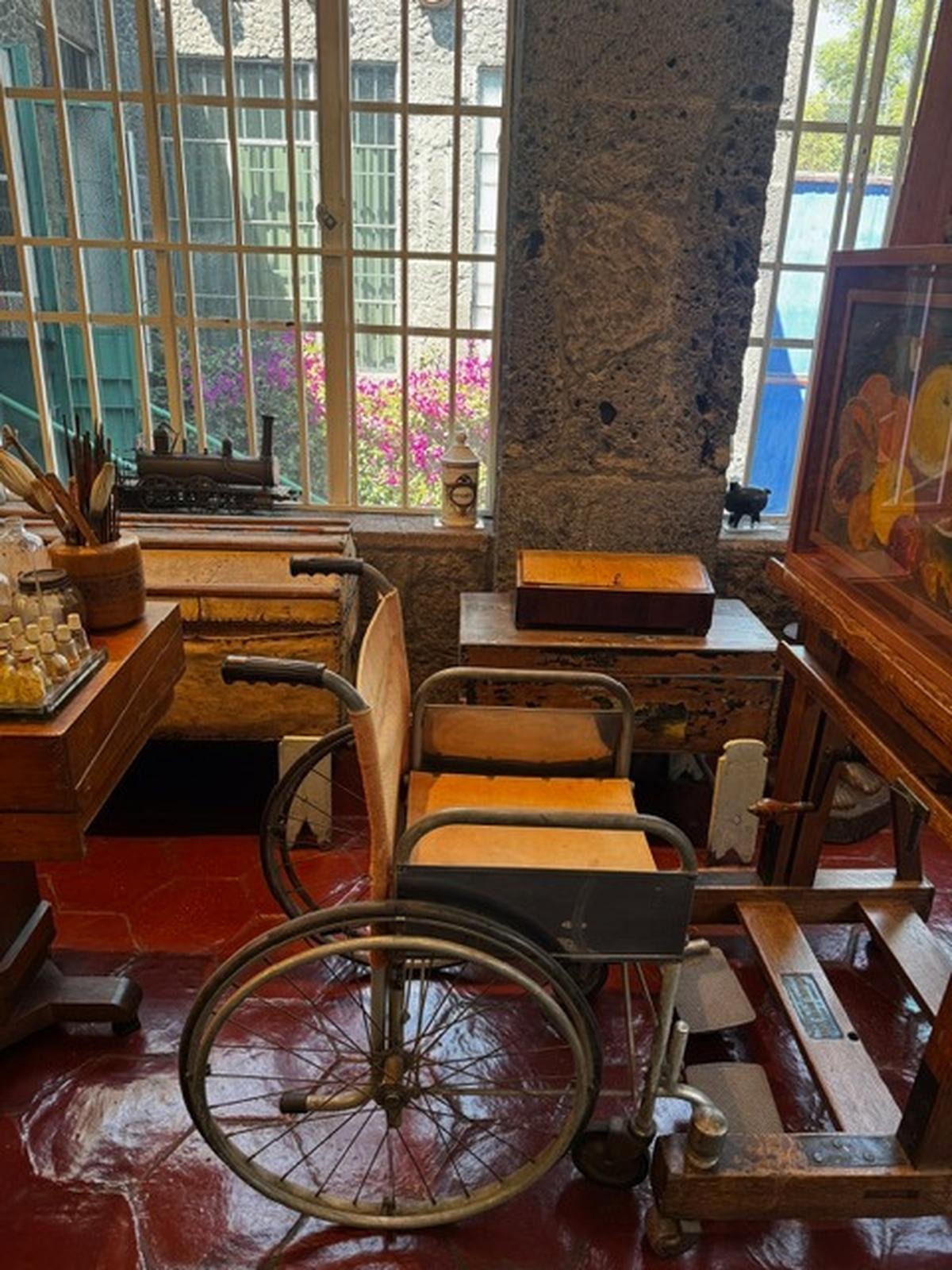
The artist’s wheelchair
I wonder about the mythologisation of Kahlo, the Mexican artist who now stares back at you from cushion covers, beach towels, coffee mugs, and tote bags across the world. Hailed as a global icon, how does her own country view her?
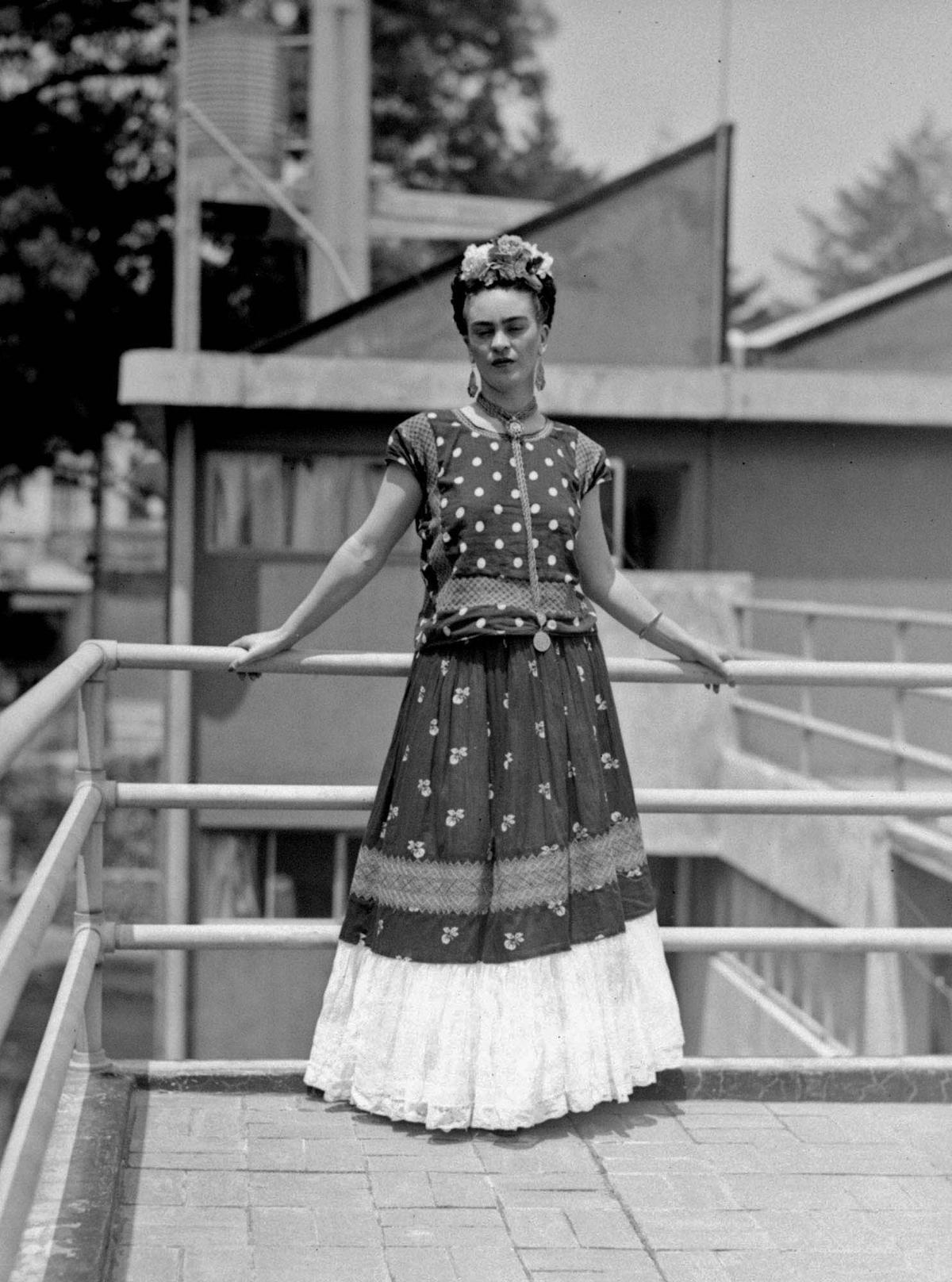
Frida Kahlo
| Photo Credit:
AP
Pain and passion
Kahlo’s personal life was filled with pain, which she channelled into art. Afflicted by polio as a child, she met with a bus accident as a teenager. While recovering in a body cast, she began focusing on painting. In her lifetime, she underwent 30 operations.
Her marriage to Rivera was tumultuous. He had several affairs, but when he had one with Kahlo’s younger sister, it broke her heart. She went on to have several affairs herself, including a rumoured relationship with Leon Trotsky and even a few women.

Frida Kahlo with her husband, artist Diego Rivera
Hailed as a feminist for her portrayal of the female form and experience, and celebrated for her self-portraits, Kahlo’s art still resonates with audiences everywhere. And India is no exception. “For the world, Kahlo is a female icon and path-breaking artist. She lived and painted on her own terms. Her bohemian lifestyle challenged family norms, which unsettles society even today. But before judging, we must ask, who is writing history and who is reading it,” says Aparajita Jain, co-director of Nature Morte Art Limited, an art gallery in New Delhi.

Aparajita Jain
Artist Dhruvi Acharya feels Kahlo was one of the first artists to make both her inner and outer worlds visible on canvas. “Her honest work has been influencing artists to express themselves without feeling constrained by artistic traditions or norms,” she says.

Relevance in her homeland
For the world, she remains an eminent artist — a tragic, resilient icon, made of equal parts suffering and defiance. But do Mexicans view Kahlo similarly? “Mexicans weren’t prepared for the way people see her now,” says Lorena Vazquez, 42, an archaeologist and guide. The turning point came in the 1990s, when Madonna purchased a Kahlo painting. It catapulted her from being known as the partner of Rivera (considered a national treasure) to a global phenomenon who eclipsed his fame, she says.
“To me, Frida is a powerful example of a woman who dared to be different — not just because of the trauma she went through or the accident that changed her life, but because she lived life on her own terms,” Lorena adds. Kahlo didn’t produce a very large body of work — fewer than 150 paintings, most of them self-portraits — largely because of her health issues and the accident that confined her to bed.
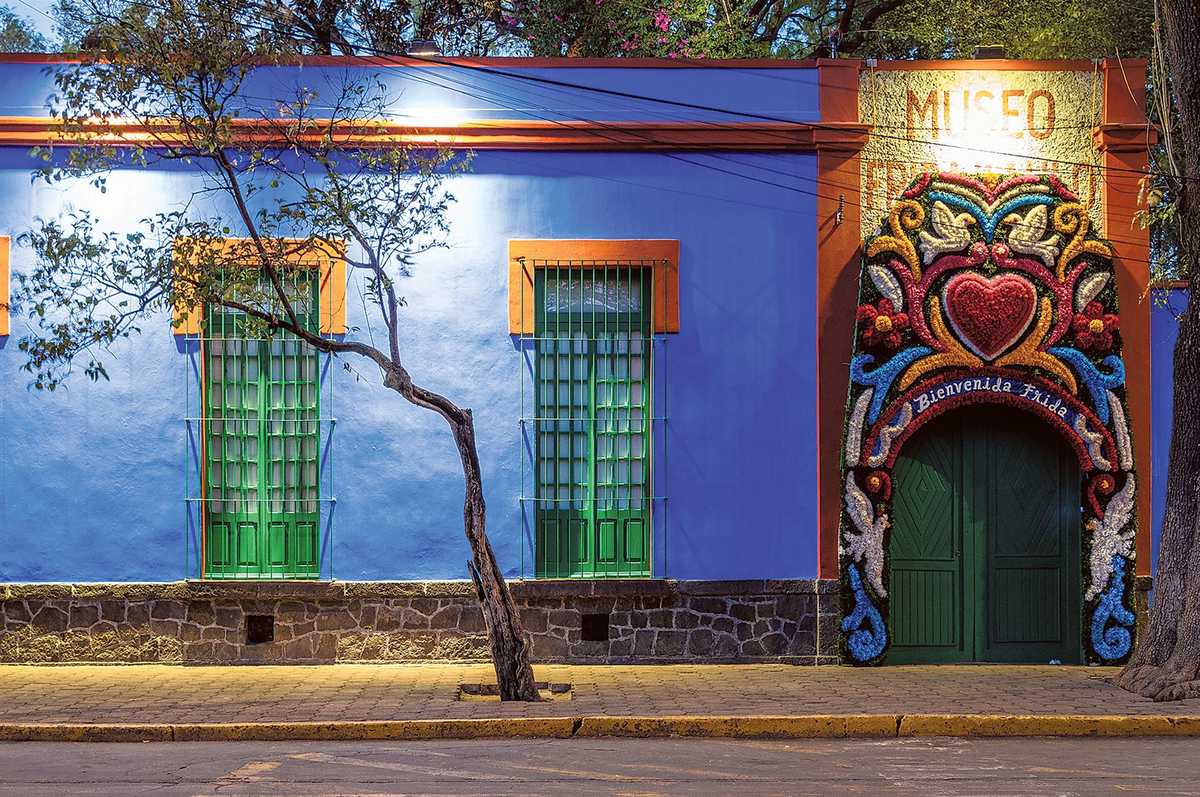
La Casa Azul
| Photo Credit:
Getty Images
Lorena’s husband, Hector Vazquez, 45, feels Kahlo is an overrated artist. “Her art isn’t particularly impressive,” says Hector, who believes her fame comes more from her association with Rivera, accident and eccentric life. “Her art is unique and eccentric, and that’s what makes it appealing. But from a technical standpoint, I don’t think her work is particularly strong.”
But others outside the country differ. “Art isn’t just about brush strokes — skill is only part of it. Higher intellect and artistic expression, and the willingness to adhere to your expression despite challenges, define true art,” says Jain.

“Rivera’s artistic legacy is unmatched but the world seems to be obsessed with Kahlo. I admire her more as a person than as a painter. She lived a radically different life at a time when open marriages weren’t accepted. Even in betrayal, she found a way to rewrite the rules, and create a new relationship that worked for her”Lorena VazquezArchaeologist and guide
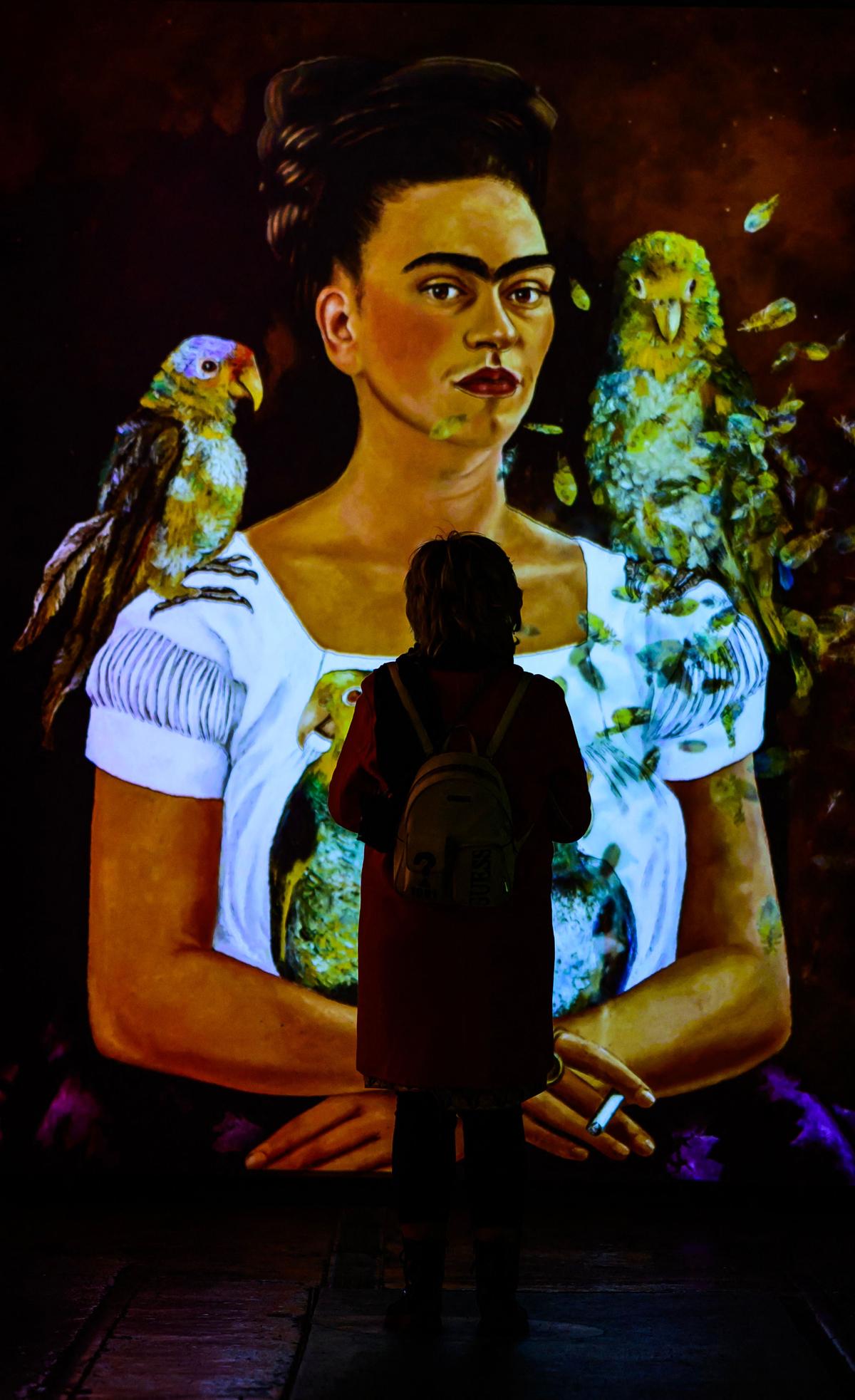
A digital projection of Kahlo’s painting Yo i mis Pericos (Me and My Parrots) in Berlin
| Photo Credit:
AFP
Branding Kahlo
Hector says Kahlo is celebrated globally because her family turned her name into a brand after Madonna brought attention to her work. They built a mini empire around it, but he believes the media ultimately shaped her image.
However, Alejandra Martinez Gallardo, an art historian and partner at Somos Arte Experiencias, a travel and concierge service in Mexico, believes that her art has its own merit. “Kahlo’s work is technically sophisticated and emotionally raw. Her ability to fuse surrealism with Mexican folk art and unflinching portrayal of identity, gender, and pain distinguishes her as a significant artistic force,” she says.
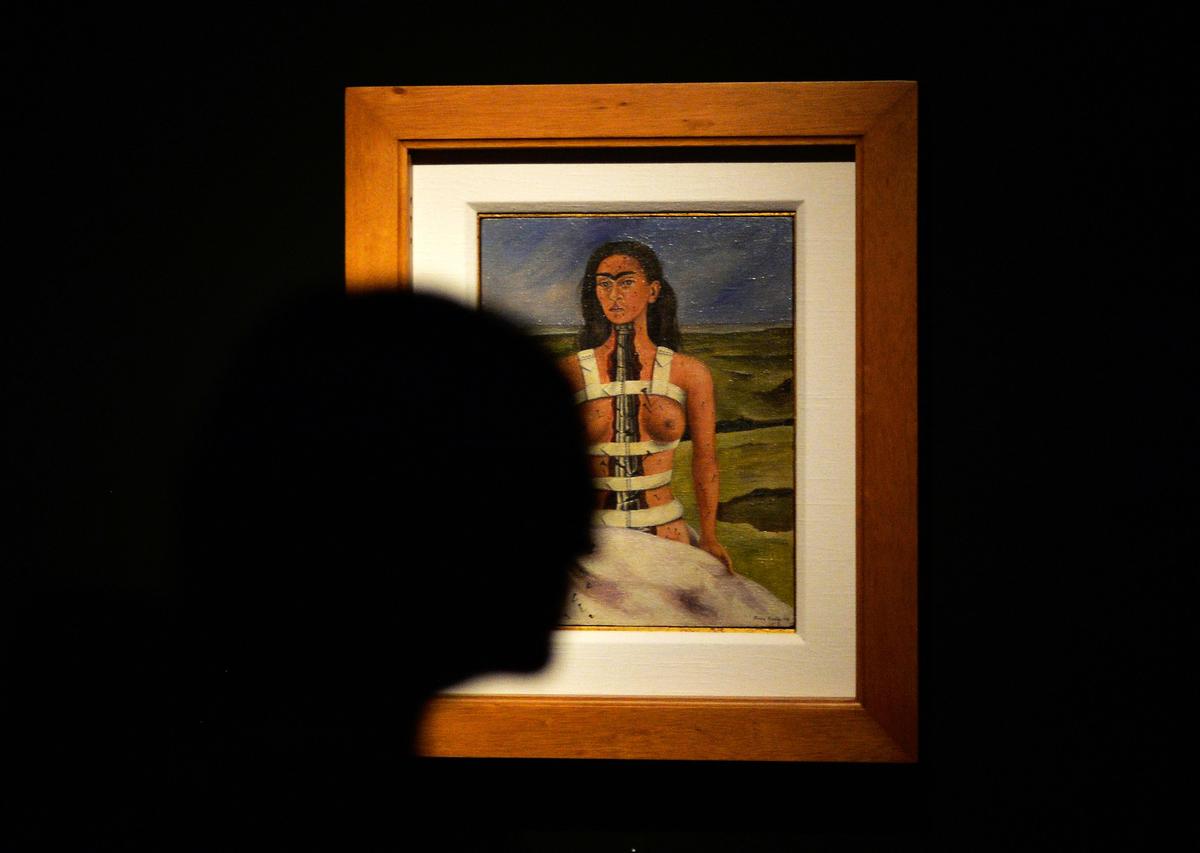
A woman walks by the painting The Broken Column (1944) by Frida Kahlo
| Photo Credit:
AFP
Gallardo believes young Mexicans feel a connection to Kahlo because her themes of identity, gender, and self-expression align with contemporary issues. “Rivera’s work resonates less directly but remains an important historical and artistic touchstone. Many young people see them as foundational figures who laid the groundwork for modern Mexican cultural identity,” she says.
Cynthia Gomez Tagle, 54, partner at Somos Artes Experiencas, agrees Kahlo is more popular abroad. “Rivera’s work has come to be perceived as a historical manifesto from another era, while Kahlo’s work is perceived as more current,” she adds.
At the V&A, surrounded by immersive projections of her life in objects, I thought I understood Kahlo’s world. But in Mexico City, hearing the voices of those who have grown up in her shadow, I realised that no single version of Kahlo exists. The world sees her as a symbol — Mexico still grapples with the woman behind it.
The writer is a Mumbai-based author and podcaster.

